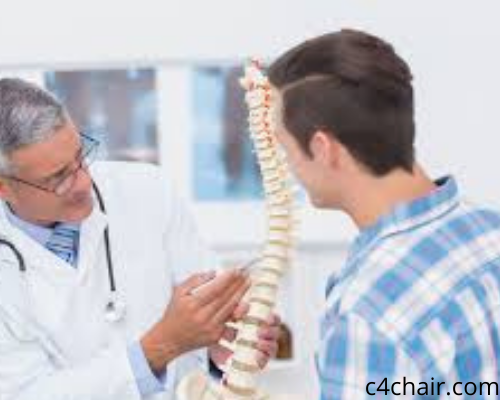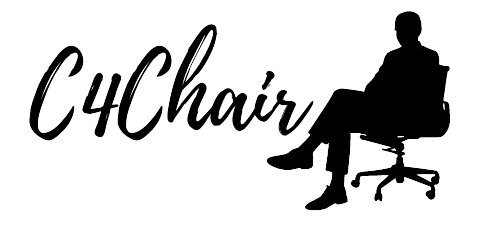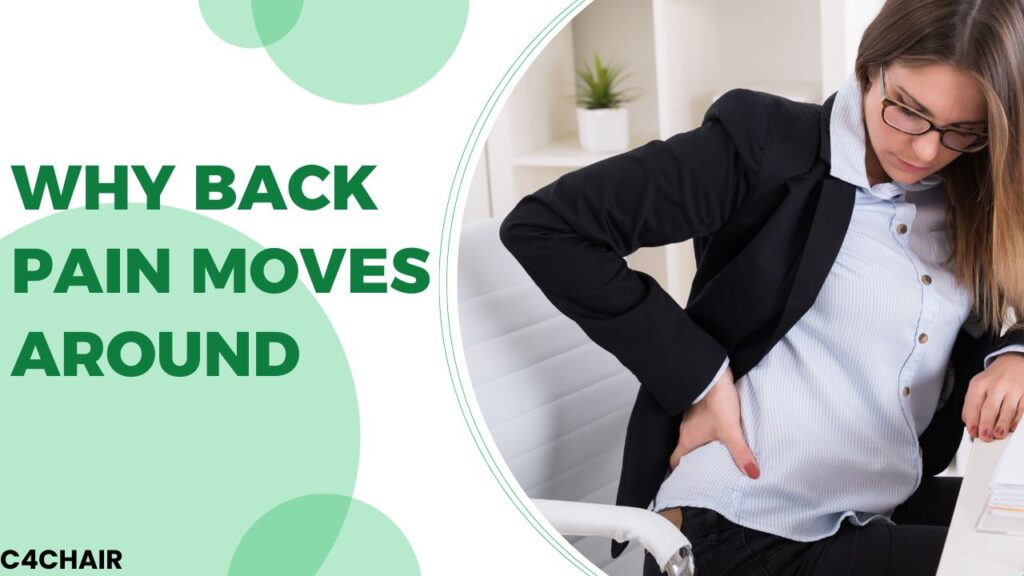There are so many types of back pain. Similarly, different kinds of treatments are also there to cure them. One of the most discussed categories is radiating back pain. This is the pain that moves around the body. For instance, sciatica. It moves down from the lower back to the legs. Apart from this, radiating back pain occurs in so many other ways also. But our main concern is why it happens? In other words, you can say why back pain moves around?
The short answer is that back pain moves around due to muscle and ligament strain. Lifting heavy objects and awkward movements that occur suddenly are prime reasons behind straining spinal ligaments as well as upper and lower back muscles. So, these activities urge the back pain to move around rather than stay in one place.
Why back pain moves around?
Back pain moves via nerves that protrude from the spine. While it moves, you can experience it in different areas of your body. As a matter of fact, the pain doesn’t stay in one place. Rather people suffering from spinal issues commonly suffer from it around vertebrae and other body parts. It moves due to different reasons. Amongst them, strained ligaments and stretched back muscles stand quite prominent. However, so many other reasons also stand behind it. let’s learn what they are
1. Ligament strains:
Muscle strains are quite common. They result from a sudden or an uncomfortable movement. Falling in an awkward position may strain ligaments. Besides, lifting a heavier object also end in stressed muscles. So, if you feel the movement of your lower back pain, it may be due to some awkward movement of your body.
2. Radiculopathy:
This is a disease related to the spinal cord nerve. It is defined by nerve compression. The pouting of invertebral disc compresses this nerve. The movement of upper back pain towards the arm means that the nerve at the upper spine is condensed.
3. Arthritis:
Arthritis is related to joints inflammation. This is a very significant reason why back pain moves around.
4. Age factor:
Degeneration of bones with age or due to osteoporosis is also the cause behind the movement of back pain.
5. Infections:
Some infections such as those related to kidneys are also amongst the reasons. The sufferer of kidney infection senses the movement of back pain to the bladder at the front while urinating.
In addition to the above-described causes of radiating back pain, this pathetic sensation may also move around due to:
- Weak arms and legs
- Fever more than 100.4 degrees F.
- Uncontrolled bladder
- Pain resulting from trauma.
Don’t take back pain movement casually. This can be an indicator of a serious medical condition. We recommend you immediately consult the physician for a diagnosis. So that any critical condition can be cured before it worsens.
Why back surgery should be avoided?

Did you ever experience back pain? No! You might be an alien! Because back pain is something that doesn’t let go of any human being. Depending upon the severity, it has a wide range of treatments. Resting, medication, exercise, and injections are some of the procedures that help cure different intensities of back pain. If any of these methods succeed to soothe your aching back, then you are not a candidate for back surgery.But sometimes these remedies fail to alleviate the aching backs.
Because the patient is going through much more than simple back pain. He/she might be suffering from a herniated disc, spinal stenosis, or some other related conditions. To treat these problems, doctors recommend sufferers to go for surgical treatment despite of its cons. Meanwhile they also consider your age limit for spinal surgery.
The idea to deal spine with surgical treatment is not at all soothing. And of course, the reason behind this is its delicateness and sensitivity. However, medical professionals don’t deny the fruitful outcomes of the operating spine. But at the same time, they also admit the possibilities of resulting complications. In short, back surgeries don’t include a warranty.
Can back surgery paralyze the patient?
Paralysis after back surgery is a very rare scenario. But the resulting complexities are absolutely undeniable. That’s why back surgery should be avoided. If different kinds of disorders appear together, they result in permanent nerve damage. Hence end up in paralysis.
A quick glance at the complications after spinal surgery:
- Damaged blood vessels in or around the spine area
- Blood may clot and bleed
- The wound doesn’t heal properly
- Failure of the back syndrome
- The area from where professionals take bone graft becomes oversensitive and painful.
Factors that enhance the chance of complications:
Different factors stand behind these complexities. Amongst them, old age stands in the first place. Besides, if the patient has some history of spinal infection or injury, he becomes more prone to difficulties. Moreover, a previous heart attack also plays an important role in a badly affected lifestyle afterward. Lastly, if the patient has been using corticosteroids in the past, he may endure unfavorable consequences after back surgery.
According to statistics, about 7.6% of patients start developing disorders within the next 30 days of surgery. Whereas, 0.3% of patients die immediately after back surgery.
A comprehensive look at the complications after back surgery:
Back surgery aims to cure back pain. Besides it also stabilizes your spine. But like every other surgery, back surgery leaves the patient with some drawbacks also. let’s learn what they are:
- A blood clot forms in the veins of the legs when the lower extremities undergo an operation. This clot acts as an obstruction for the blood running through veins. It ends in pulmonary embolism. The severity of this condition may result in death.
- The building up of this clot badly impacts the locomotion of the patient. Hence revival towards moving after surgery becomes difficult.
- The anesthesia used in the surgery imposes a negative effect on the lungs. Besides, lying in bed also ends in the lungs malfunctioning. However, this complication is not long-lasting. Getting up, sitting, walking, and some exercise let the lungs get back to normal functioning.
- A back surgery includes the usage of metal plates, screws, and rods. These materials help in vertebrae alignment. But at the same time, this hardware can be located at the wrong place resulting in hardware fracture.
Final verdict:
In the US, the statistics in regard to back surgery are more than 300 thousand per year. The pain of the patients ranging from 10% to 39% persists or worsens. Moreover, this percentage is continuously increasing every year. This pain results in failed back surgery syndrome.
So, if your doctor recommends back surgery for your ailment, do consider failed back surgery statistics around the globe.
No doubt, back surgery relieves aching backs. But you can not overlook its side effects as well. The pain resulting from spine surgery is not treatable. Thus the patients have no other choice other than to live with it till last breath.

